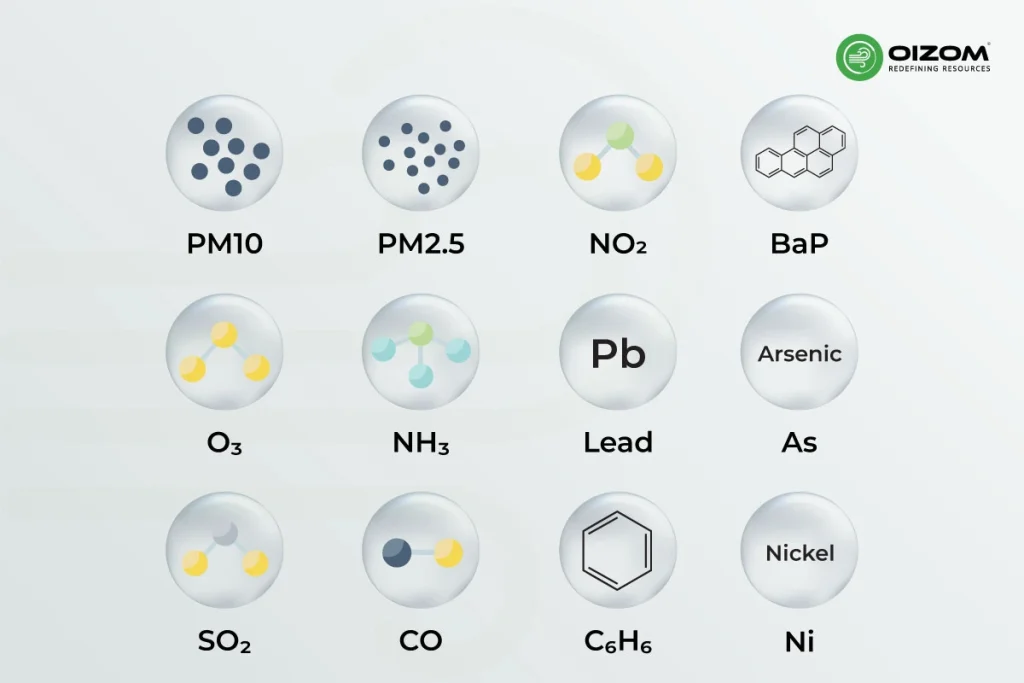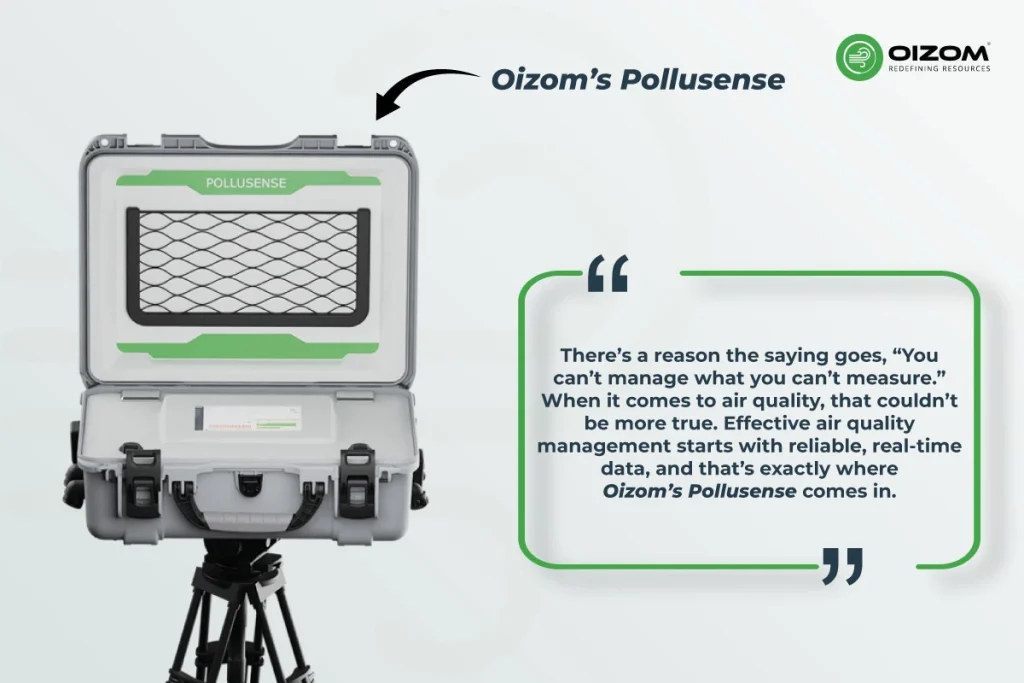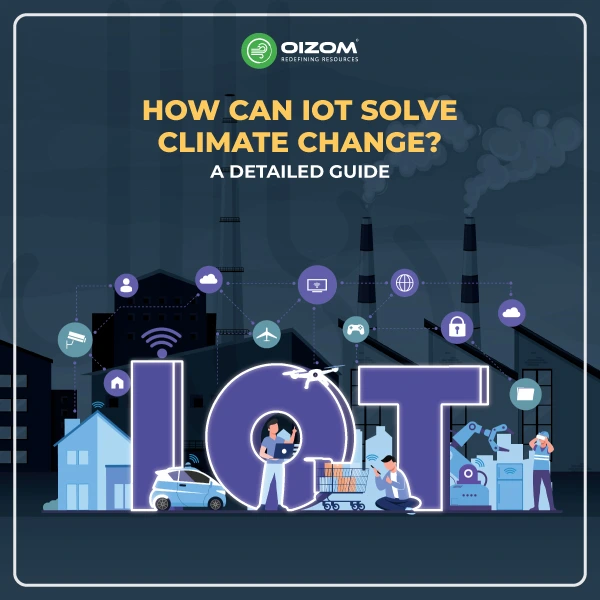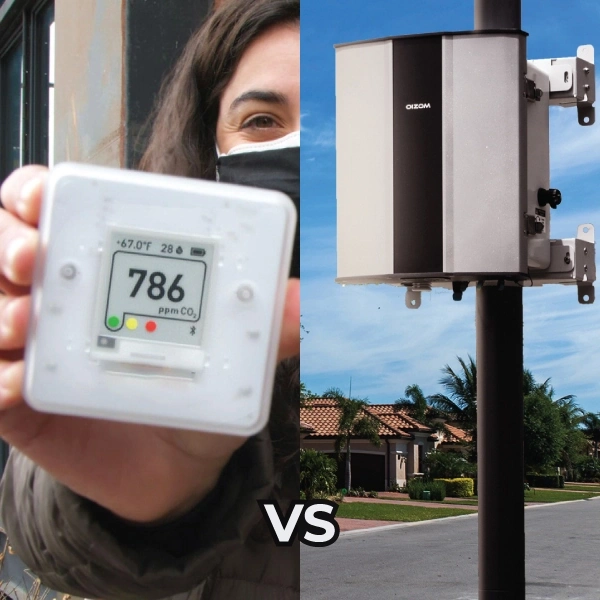Summary of Blog
Ever wondered what makes the air around us “safe” to breathe? That’s where the National Ambient Air Quality Standards (NAAQS) come in. Set by India’s Central Pollution Control Board, these benchmarks define acceptable pollution levels for key pollutants like PM2.5, NO₂, SO₂, ozone, and more. They’re backed by science and designed to protect public health and the environment.
This blog breaks down what NAAQS is, why it matters, and how it’s evolving. From understanding the difference between primary (health-focused) and secondary (environmental-focused) standards to how global benchmarks like WHO’s are influencing updates, it’s all here.
We also spotlight real-time air quality tools, such as Pollusense, which make it easier to track and respond to pollution locally. Whether you’re a policymaker, industry professional, or just curious about clean air, this guide helps you see how these standards shape our daily air quality and why they matter more than ever.
What are National Ambient Air Quality Standards?
Did you know? On average, a person inhales around 14,000 litres of air every day, and yet, we often overlook what’s actually in that air. That’s where National Ambient Air Quality Standards (NAAQS) come into play. These are regulatory benchmarks that define the maximum permissible limits for key pollutants in outdoor air, ensuring it’s safe to breathe, both now and for generations to come.
Poor air quality doesn’t just harm health; it impacts livability, ecosystems, and the economy. From rising respiratory illnesses to reduced worker productivity and environmental degradation, the effects are far-reaching. NAAQS are designed to curb this by setting scientifically backed thresholds for pollutants like PM2.5, PM10, NO₂, SO₂, CO, O₃, lead, and ammonia.
In India, these standards are defined by the Central Pollution Control Board (CPCB) and guide policies on emission control, city planning, and industrial operations. Globally, agencies like the U.S. EPA play a similar role. The standards aren’t arbitrary; they’re informed by toxicological and epidemiological studies, accounting for both short-term spikes and long-term exposure risks.
In this blog, we’ll explore how these standards are set, what pollutants they include, and why they’re a crucial tool for maintaining urban air quality, public health, and the overall sustainability of our cities.
NAAQS and Its Purpose
At its core, the National Ambient Air Quality Standards (NAAQS) are about drawing a clear line between acceptable and harmful levels of air pollutants in the environment. These standards are legally binding thresholds set by regulatory authorities, like the Central Pollution Control Board (CPCB) in India or the U.S. Environmental Protection Agency (EPA), based on extensive scientific and health research.
The 2019 notification reinforces the purpose of NAAQS:
- Safeguard human health, particularly of vulnerable groups like children, the elderly, and those with respiratory conditions
- Control and reduce air pollution from industrial, vehicular, and other anthropogenic sources
- Guide enforcement, city planning, and policy-making with a clear legal benchmark
The standards specify concentration limits for 12 critical pollutants, including: PM10, PM2.5, SO₂, NO₂, CO, O₃, NH₃, Pb, Benzene (C₆H₆), Benzo(a)Pyrene (BaP), Arsenic (As), and Nickel (Ni).
Each pollutant is associated with:
- Permissible limits (e.g., PM2.5: 60 µg/m³ for 24-hour average, 40 µg/m³ annual)
- Averaging times (e.g., 1-hour, 8-hour, 24-hour, annual)
- Monitoring frequency and exceedance criteria
Unlike earlier standards, the 2019 version emphasizes uniform application across different zones (residential, industrial, and sensitive), simplifying compliance assessment and allowing for more consistent air quality evaluation.
Simply put, NAAQS is the yardstick India uses to define clean air, enabling data-driven decision-making, regulatory action, and public awareness through tools like the Air Quality Index (AQI).
Pollutants regulated under NAAQS

The National Ambient Air Quality Standards (NAAQS), as notified by the CPCB in 2019, regulate 12 key ambient air pollutants, each selected based on their proven health risks and environmental impacts. These pollutants represent a mix of particulate matter, gaseous contaminants, and toxic trace elements, ensuring a comprehensive approach to air quality management.
Here’s what they include:
- Particulate Matter (PM10 and PM2.5): Fine inhalable particles that penetrate deep into the lungs, often sourced from construction, road dust, and combustion.
- Sulphur Dioxide (SO₂): A corrosive gas mainly from fossil fuel combustion, contributing to respiratory issues and acid rain.
- Nitrogen Dioxide (NO₂): Emitted from vehicles and industrial processes, NO₂ aggravates asthma and forms ground-level ozone.
- Carbon Monoxide (CO): A colorless, odorless gas from incomplete combustion, impairing oxygen delivery in the bloodstream.
- Ozone (O₃): A secondary pollutant formed through chemical reactions between NOx and VOCs under sunlight; causes lung inflammation.
- Ammonia (NH₃): Released from agriculture and industrial emissions, it contributes to secondary PM formation.
- Lead (Pb): A heavy metal that affects neurological functions, mainly from battery manufacturing and smelting.
- Benzene (C₆H₆), Benzo[a]Pyrene (BaP), Arsenic (As), and Nickel (Ni): Toxic air pollutants linked to cancer and organ damage, primarily from industrial and fuel-related sources.
Each pollutant is assigned a concentration limit, an averaging time, and a compliance frequency, ensuring both short-term and long-term exposure risks are addressed. By regulating this set, NAAQS creates a structured baseline for monitoring air quality and enforcing control measures that are both health-focused and technically measurable.

Pollusense is a portable air quality monitoring system built for today’s fast-moving environmental needs. Whether you’re an industry professional or part of a regulatory body, Pollusense is designed to streamline your monitoring processes, helping you capture accurate data without the need for a heavy setup.
One of its biggest advantages?
It’s compact and lightweight. That means you can easily carry it, install it on-site, and move it as needed, without specialized infrastructure or manpower.
Despite its small size, Pollusense packs serious capabilities. It can monitor up to nine harmful gases, including CO, CO₂, SO₂, NO₂, O₃, and H₂S (with options to customize based on your monitoring needs). It also measures a wide range of particulate matter, PM1, PM2.5, PM10, and PM100, giving you a full picture of ambient air quality.
If you’re looking for a smart, flexible, and reliable way to measure what matters, Pollusense offers the precision you need in a form factor that fits your workflow, not the other way around.
Primary vs Secondary Standards
When we talk about air quality standards like those under NAAQS, it’s important to understand that not all limits serve the same purpose. That’s where the distinction between primary and secondary standards comes in.
Primary standards are set with one clear goal: to protect human health. These thresholds are based on medical and epidemiological research that links pollutant exposure to health outcomes, especially among sensitive groups like children, the elderly, and people with asthma or cardiovascular conditions. According to the 2024 State of Global Air report, air pollution was responsible for the deaths of 709,000 children under the age of five, which is about 15% of all global deaths in that age group. To put it in perspective, nearly 2,000 young children die every day due to health problems caused by polluted air.
For example, limits on PM2.5 or ozone under primary standards are designed to minimize risks of respiratory distress, stroke, or long-term lung damage.
On the other hand, secondary standards are focused on environmental protection. These aim to preserve visibility, prevent damage to crops, forests, bodies of water, buildings, and even ecosystems. Think of secondary standards as safeguards for the broader environment, not just immediate human health. For instance, SO₂ and NO₂ can acidify soils and water bodies, impacting biodiversity and agriculture.
In many regulatory systems, including the U.S. EPA framework, both types of standards exist. In India, while the CPCB’s 2019 NAAQS does not explicitly differentiate them, the underlying principle remains, ensuring both public health safety and ecological well-being through well-defined pollutant limits.
Understanding this split helps industries, planners, and policymakers prioritize interventions more effectively, addressing not just what’s urgent for humans today, but also what’s essential for the environment tomorrow.
The NAAQS Review Process
Setting air quality standards isn’t a one-time task; it’s a dynamic, science-driven process. The National Ambient Air Quality Standards (NAAQS) are reviewed periodically to ensure they remain relevant with evolving health research, pollution trends, and technological advancements.
In India, this responsibility lies with the Central Pollution Control Board (CPCB) and the Ministry of Environment, Forest and Climate Change (MoEFCC). The review process involves a multi-step approach:
- Scientific Evidence Review: Experts assess the latest epidemiological, toxicological, and atmospheric studies that link pollutant exposure with health and ecological impacts.
- Stakeholder Consultations: Inputs are taken from medical researchers, industry representatives, urban planners, and civil society to balance feasibility with health protection.
- Monitoring Data Analysis: National air quality monitoring data (from systems like NAMP and CPCB labs) is used to evaluate trends, hotspot locations, and pollutant behavior over time.
- Benchmarking: Global standards, like WHO guidelines and U.S. EPA[ thresholds, are referenced to assess alignment and gaps.
- Revision & Notification: Based on this evidence, standards may be tightened, added to, or redefined before being notified as an official update.
The last major revision in 2019 updated pollutant limits and emphasized uniform applicability across all regions, urban, industrial, and sensitive areas alike.
Ultimately, the NAAQS review process ensures the standards remain scientifically valid, technically implementable, and health-protective, because clean air is not a static goal, but a moving target that needs constant recalibration.
Recent Updates and Revisions
India’s National Ambient Air Quality Standards (NAAQS) have remained largely unchanged since the comprehensive revision in 2009, which established uniform limits for 12 pollutants across various regions. However, the evolving landscape of air quality management has prompted discussions on further updates.
In August 2021, the Central Pollution Control Board (CPCB) announced plans to revisit the NAAQS. This initiative, led by experts from institutions like IIT Kanpur, aims to:
- Reassess existing pollutant thresholds based on the latest scientific and health data.
- Consider the inclusion of additional pollutants, particularly heavy metals like cadmium, chromium, and zinc, which have been detected at concerning levels in urban areas such as East Delhi.
- Enhance monitoring frameworks and align standards more closely with World Health Organization (WHO) guidelines, which have recently recommended stricter limits for pollutants like PM2.5 and PM10.
Complementing these efforts, the National Clean Air Programme (NCAP), launched in 2019, set ambitious targets to reduce PM10 levels by 20–30% by 2024, using 2017 as the baseline. Recognizing the need for more aggressive action, the target was revised to a 40% reduction by 2025–26. As of the latest reports, 95 out of 131 cities have shown improvements in PM10 concentrations, with 18 cities meeting the NAAQS for PM10.
These developments underscore India’s commitment to refining its air quality standards and ensuring they reflect current scientific understanding and public health needs.
Comparison of PM2.5 and PM10 Standards (India vs WHO)
| Pollutant | 24-Hour Limit (India NAAQS) | Annual Limit (India NAAQS) | WHO 2021 Limit |
|---|---|---|---|
| PM2.5 | 60 µg/m³ | 40 µg/m³ | 15 µg/m³ (24h), 5 µg/m³ (annual) |
| PM10 | 100 µg/m³ | 60 µg/m³ | 45 µg/m³ (24h), 15 µg/m³ (annual) |
Conclusion
Understanding the National Ambient Air Quality Standards (NAAQS) is crucial to addressing one of today’s most pressing environmental challenges: air pollution. These scientifically defined thresholds help us measure what’s safe, guide policy decisions, and drive accountability in urban planning, industrial emissions, and public health strategies.
As India continues to face rising pollution levels, CPCB’s periodic reviews and initiatives like the National Clean Air Programme (NCAP) show that these standards aren’t static; they evolve with science. With growing evidence linking pollutants like PM2.5, NO₂, and O₃ to chronic health conditions, future revisions may include stricter limits, new pollutants, and technology-led monitoring methods.
Looking ahead, real-time, hyperlocal data from IoT-based monitoring systems like Pollusense will complement NAAQS by making air quality action more responsive and localized. Because in the end, clean air isn’t just a policy target, it’s a public right. And NAAQS will continue to be the benchmark that ensures we stay on track.
National Ambient Air Quality Standards (NAAQS) are air pollution limits set by the Central Pollution Control Board (CPCB) to define safe levels of key pollutants like PM2.5, PM10, NO₂, SO₂, and O₃ in outdoor air. These standards help protect public health and the environment.
India’s NAAQS regulates 12 major pollutants, including PM2.5, PM10, SO₂, NO₂, CO, O₃, NH₃, lead, benzene, BaP, arsenic, and nickel, each with defined concentration limits and averaging times.
India’s limits for PM2.5 and PM10 are more relaxed than the WHO guidelines. For example, India’s annual PM2.5 limit is 40 µg/m³, while the WHO recommends just 5 µg/m³ for better health protection.
NAAQS reduce exposure to harmful pollutants, helping prevent respiratory diseases, heart problems, and early deaths. They are especially crucial for children, the elderly, and those with pre-existing health conditions.
Air quality is tracked through national monitoring networks and smart systems like Pollusense, which measure pollutants in real-time. This data supports enforcement, AQI reporting, and clean air action plans.






